Ideas for ways to add detail to garden railroads come from many sources. Novel ideas often come from sources not directly connected to model railroading. One of these is fairy-garden accessories. Fairy (or faerie) gardens have become a popular niche in the gardening world. This has led to a number of manufacturers making items that can be used in creating the miniature scenes in fairy gardens and, serendipitously, in garden railroads. I will illustrate a few accessory items that are commercially available, as well as others you can make, that are appropriate for our railroads.
Miniature flower pots placed around houses can give the houses a lived-in and tended appearance. One of several sources online can be found at: www.fairyhomesandgardens.com If you know a potter who can make miniature pots, explain what you want and check some samples. I am fortunate that my wife Joyce is a potter and, several years ago, she was happy to contribute a variety of pots and jugs for my railroad (photo 1). Tiny succulents and other very small plants can be planted in these miniature pots to add live interest to domestic scenes (see “Miniscaping,” December 2017 GR).
There is a great variety of miniature outdoor furniture available online and at stores that sell fairy-garden supplies (photos 2 to 5). These are usually made to withstand the elements. If you want to detail the insides of houses, dollhouse furniture (in 1:24 scale for large-scale railroads) can be found in stores and online where merchants sell dollhouse accessories. Photo 2 shows an outdoor rustic bench that looks appropriate next to a log cabin. Note the watering-can flower pot full of simulated flowers behind the right-hand figure.
A more modern rustic picnic table and benches is shown in photo 3. These would look right at home in a city park or country picnic area. This set is made by Fiddlehead Fairy Garden and sells for about $4.00 in retail shops. Photo 4 shows a metal patio table and chairs. The metal table and chairs in photo 5 are less ornate and more contemporary. Several of these sets could make an attractive outdoor café area in front of a restaurant. These and other accessories are available at some shops, and online at sites such as www.myfairygardens.com and www.miniature-gardening.com
If you are into making items like these yourself, refer to Jack Verducci’s articles in his ongoing series “Finishing touches,” starting in the April 2017 issue. He makes outdoor furniture from ADA plastic, cutting them with a laser cutter. His plans can also be used for hand-cutting.
You can create scenes as rustic or ornate as you want for any given area. In the more ornate category, look for the gazebo shown in photo 6. It is made to look like carved stone or cast concrete and could be used as a pergola with climbing plants. The accompanying pedestals have been decorated with glass balls (marbles) to add an elegant touch. In Verducci’s August 2017 article, he shows how to make a simple gazebo with ADA plastic.
Little houses with unmistakable charm are available in all sorts of styles. Photo 7 shows one that appears to be made from natural materials. Others are not as whimsical, although, being fairy-garden material, they all have some cutesy qualities. In the right setting, they can add a bit of fun or whimsy to a scene. You can even find a whimsical camper, or travel trailer. It’s available from www.consumercrafts.com and is made to look like riveted aluminum in the classic silver bullet shape.
In the more rustic category, you can buy an old-fashioned windmill, 11″ tall, patterned after a farm or ranch water-pumping windmill. It costs $11 plus shipping: www.fairygardenstore.com/11-Rustic-Windmill-for-Fairy-Garden-JC80200.htm
A good source of ideas for do-it-yourself accessories is a recently published book, The Gardening in Miniature Prop Shop: Handmade Accessories for Your Tiny Living World by Janit Calvo. It’s a detailed guide to creating one-of-a-kind miniature gardens and their accessories. Thirty-seven projects are included with fully illustrated, step-by-step instructions.
Many figures are available from fairy-garden suppliers. Most are traditional winged and fantasy-type fairies and related kin. Some are more realistic or could be easily modified to fit into special scenes. In the do-it-yourself category, figures and accessories made with clay or clay-like products provide endless possibilities. I have made figures with Sculpey polymer modeling clay, which requires baking in a toaster oven or kitchen oven (search GR for articles on how to make figures with this product).
Recently, my wife was using a self-hardening clay (no baking required) and I wanted to try that for figures and accessories. The material she was using was Mexo Red, an air-dry clay-like product. I made a beaver sitting on a stump and painted it with Folkart outdoor acrylic paint (photo 8). While Sculpey is inherently waterproof, the self-hardening clay needs to be sealed with paint or spray sealant to be weatherproof.
It’s really cool to have family or friends who want to get in on the act. The ceramic houses in photos 9 and 10 were made by my wife. She and some potter friends are making their own miniature gardens (sans trains) and doing some minscaping of their own. The more, the merrier, I say.
RESOURCES
Two Green Thumbs Miniature Garden Center
www.shop.twogreenthumbs.com/Plants-for-Sun-or-Part-Sun_c59.htm
Miniature Gardening
https://miniature-gardening.com
Mulberry Miniatures
https://mulberryminiatures.com/images/category/5-Faery_Plant_Kingdom_Catalog.pdf





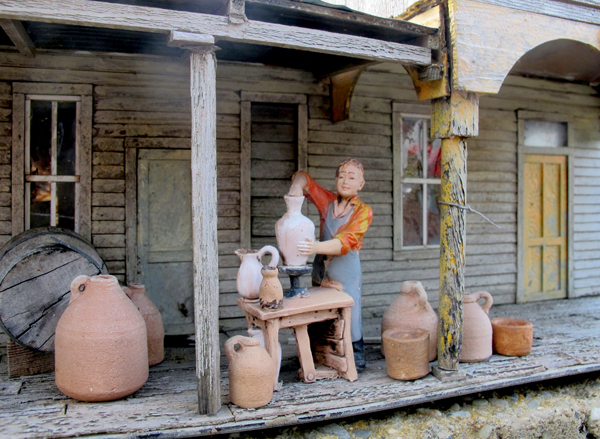
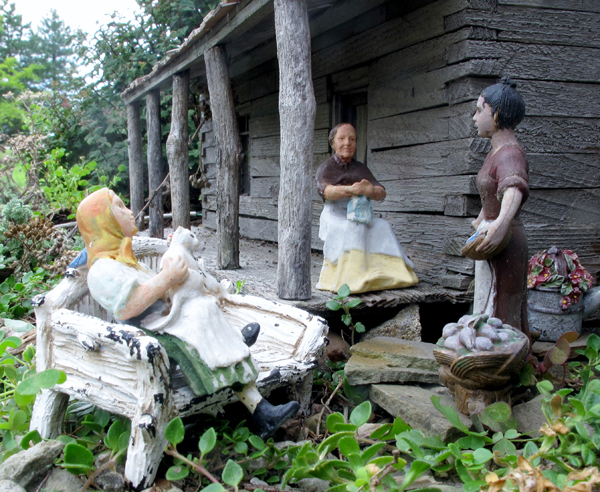
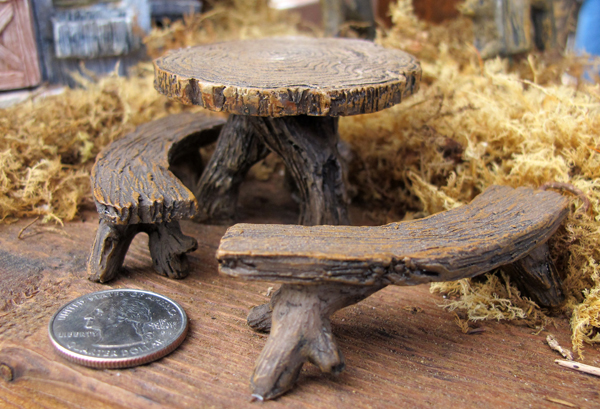
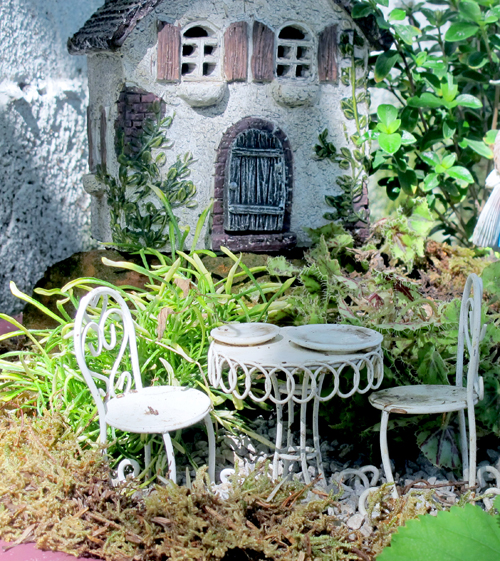
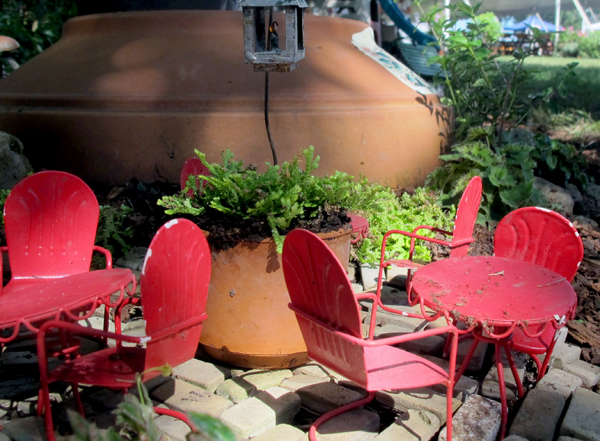
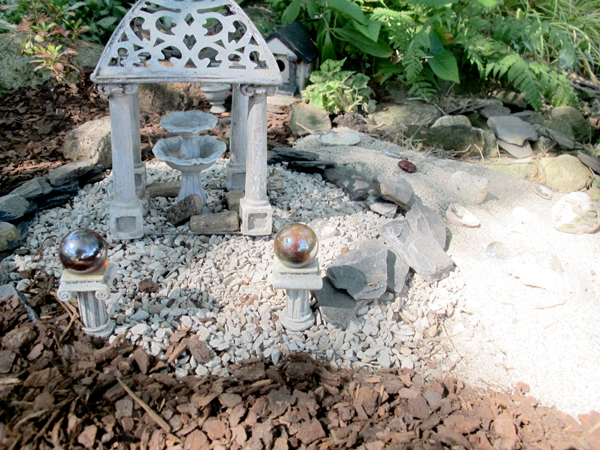
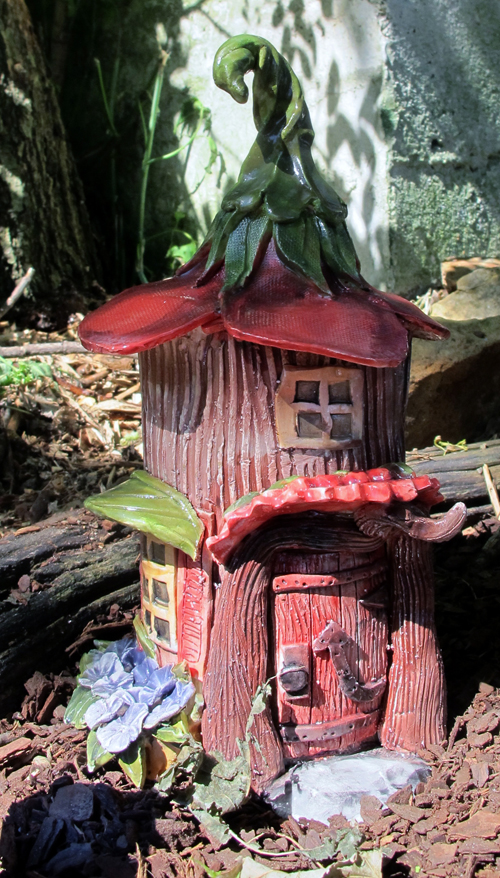
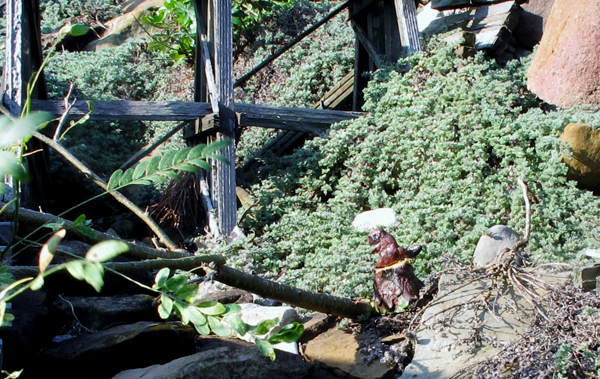
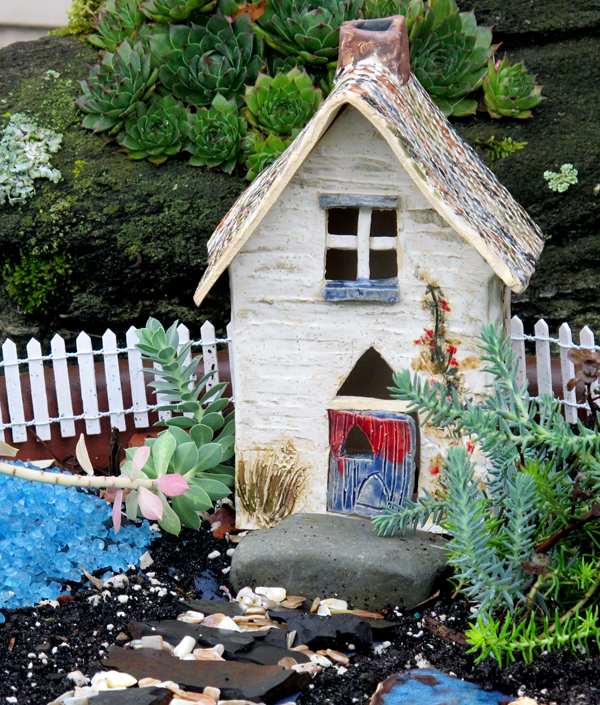
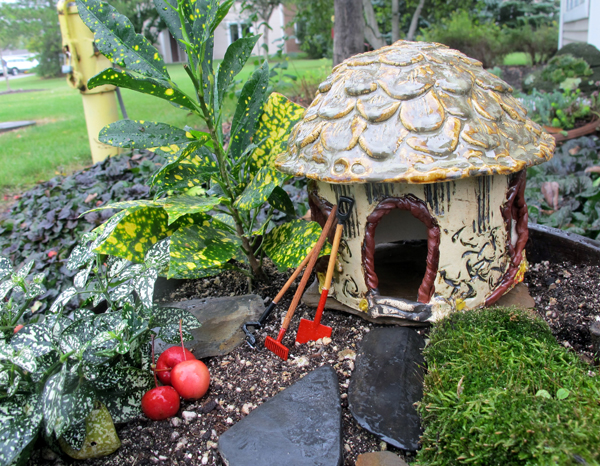

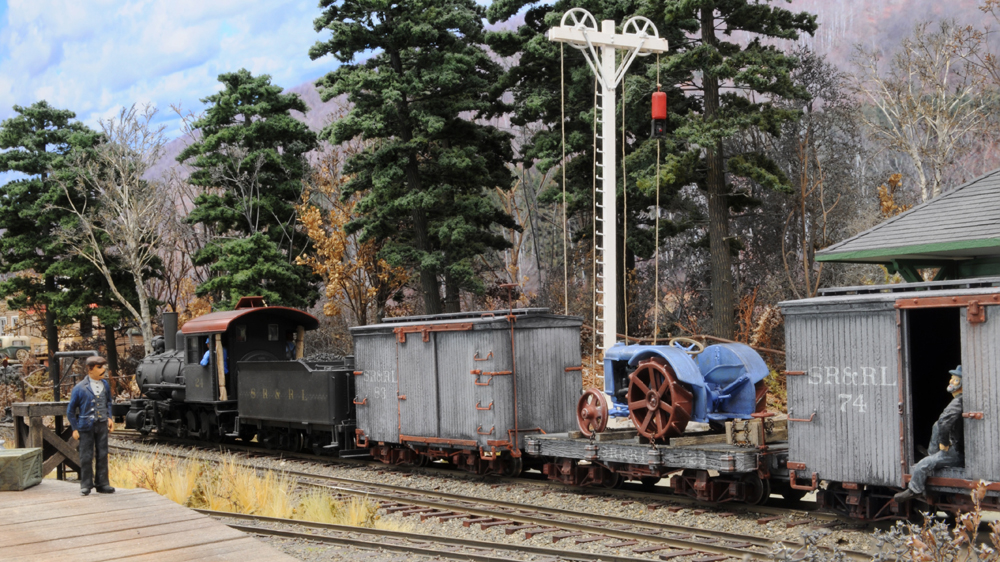
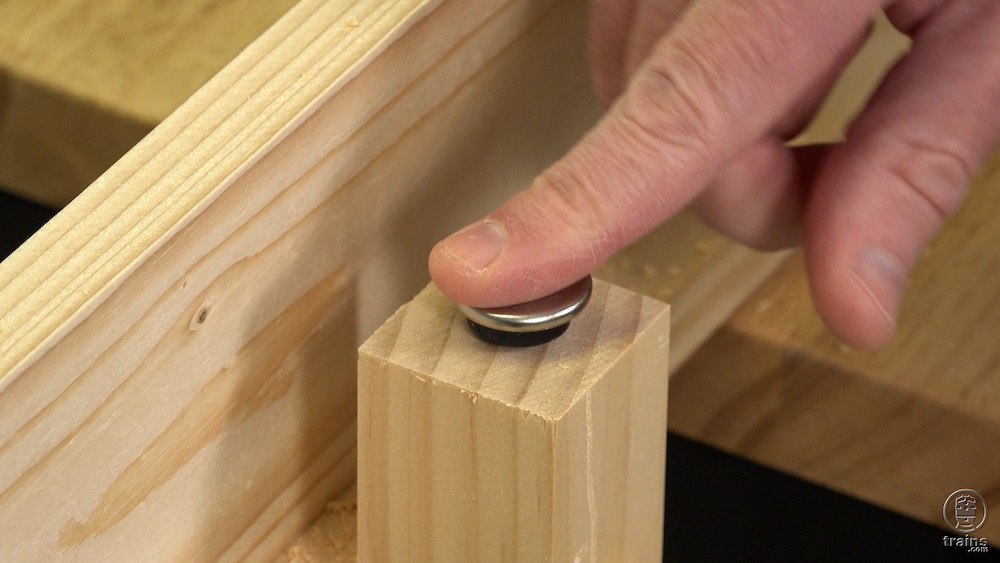
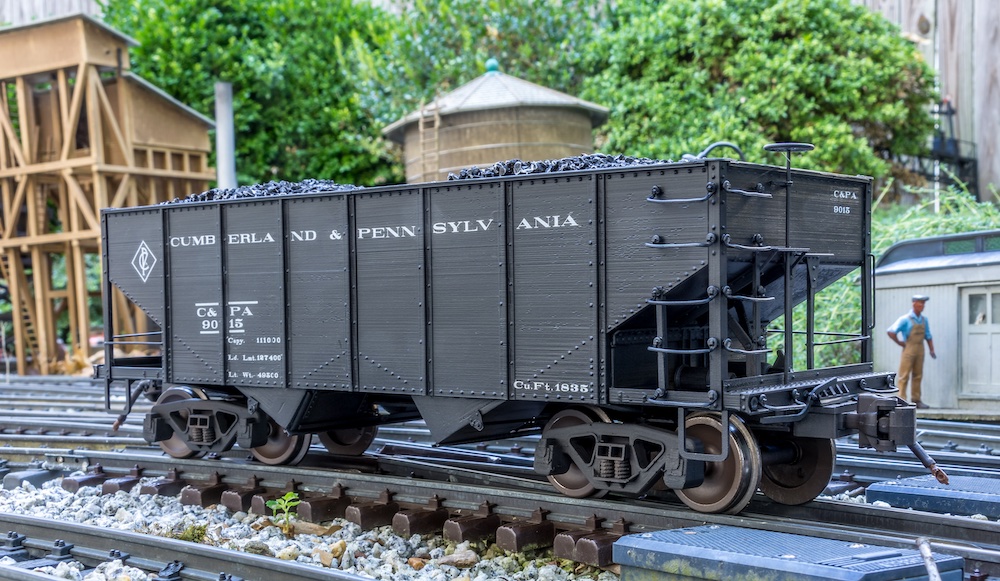
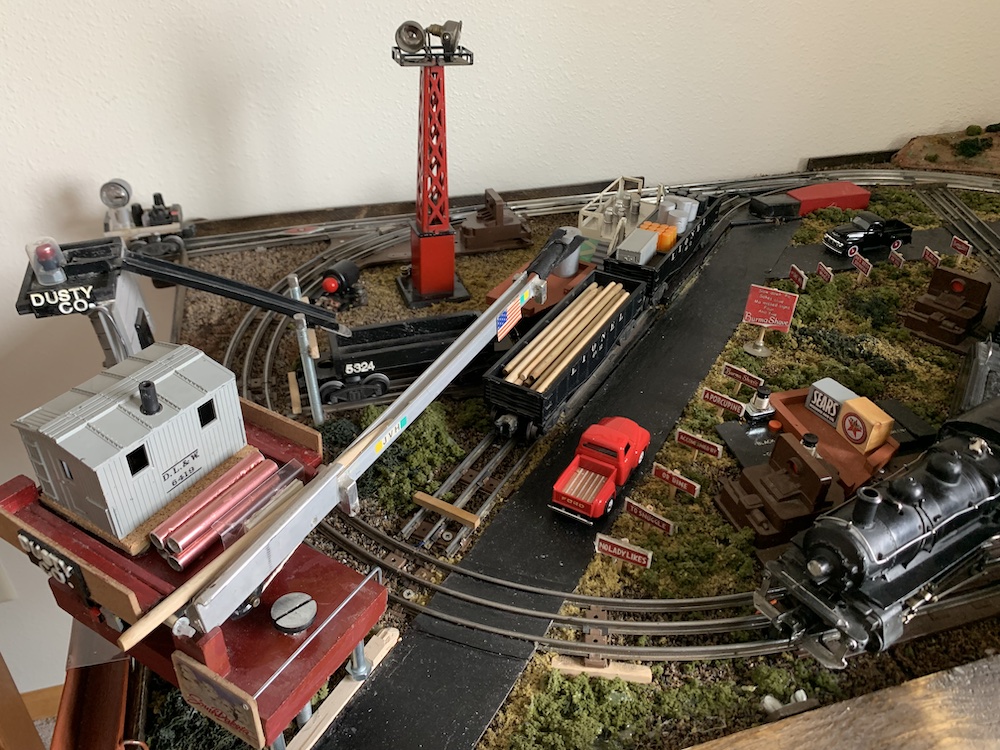




while I enjoy the idea of putting miniature things in my garden railroad, I find that at times, they can get destroyed because I become “BIG_FOOT ” while cleaning the track or picking up a train that has has a problem at the wrong place. So how many of the whimsical items I put in becomes an issue for me. The items should be placed so that you can walk around for maintenance and not wreck your well- placed small things ….Also, placement of buildings should also be thought about before getting too far into the railroading … I have been known to even carelessly step on a store because I was in a hurry….. Carl Kokes ….. Peru, NY